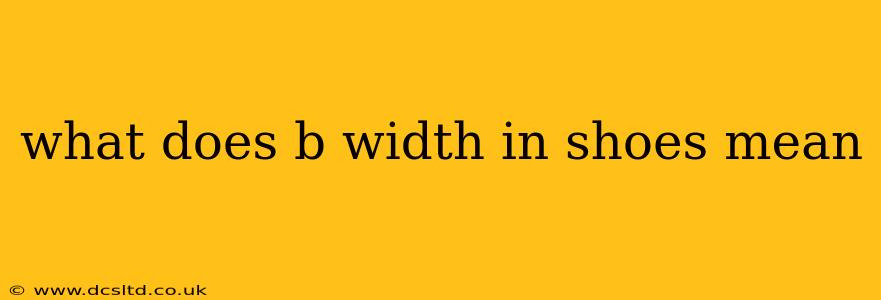Finding the perfect pair of shoes involves more than just the right size; it also requires understanding shoe width. A common question many shoppers ask is, "What does B width in shoes mean?" This guide will demystify shoe widths, focusing specifically on what a B width represents and how it relates to other width options.
Shoe width refers to the measurement across the widest part of your foot, typically the ball of your foot. Manufacturers use a letter system to categorize shoe widths, with B width representing a medium width. This is the most common width, and many shoes are made in this size. It's important to understand that this is a standard measurement, and the actual dimensions can slightly vary between brands and even models within a brand.
What are the Different Shoe Widths?
Shoe widths typically range from narrow to extra-wide, using letters to denote each width. While the specific letter assignments can vary slightly among manufacturers, the general scheme is as follows:
- AAA (AAAA, AAAAA): Extra Narrow or Slim – these widths are significantly narrower than average and are often difficult to find.
- AA (AA): Narrow – considerably narrower than a medium width.
- A: Narrow - slightly narrower than a medium width.
- B (M): Medium – this is the standard and most common width. Sometimes, you'll see this denoted as "M" for medium.
- D (W): Wide – noticeably wider than a medium width. Sometimes, you'll see this denoted as "W" for wide.
- EE (2E): Extra Wide – considerably wider than a medium width.
- EEEE (4E): Extra Extra Wide – significantly wider than a medium width, designed for very wide feet.
How Do I Know My Shoe Width?
Determining your shoe width is crucial for comfort and preventing foot problems. Here's how you can find out:
- Measure your feet: Use a Brannock device, often found in shoe stores, for an accurate measurement including both length and width.
- Try shoes on: Visit a shoe store and try on different widths to feel what fits best. Pay attention to how the shoe feels across the ball of your foot and in the toe box. Avoid shoes that pinch or feel too tight.
- Check existing shoes: If you already own shoes that fit well, check the inside of the shoe to see what width is listed. This can give you a starting point.
Why is Knowing My Shoe Width Important?
Understanding and choosing the correct shoe width is essential for several reasons:
- Comfort: Wearing shoes that are too narrow can lead to bunions, blisters, hammertoes, and other foot problems. Shoes that are too wide can cause instability and discomfort while walking.
- Proper Fit: The correct width ensures the shoe fits snugly around your foot without constricting your toes or causing excessive pressure points.
- Preventing Injuries: Ill-fitting shoes increase your risk of foot, ankle, and even knee injuries.
What if I Can't Find My Size in B Width?
Finding shoes in specific widths can sometimes be challenging. If you can't find your size in a B width, consider these options:
- Check different brands: Manufacturers' sizing can vary, so try other brands known for offering a wider range of widths.
- Look online: Online retailers often have a broader selection of shoe sizes and widths.
- Consider stretching: If the shoe is slightly too narrow, you could try stretching them with shoe stretchers.
Choosing the right shoe width is a critical aspect of finding comfortable and supportive footwear. Remember, a B width indicates a medium width, but always prioritize trying shoes on to ensure the perfect fit for your feet.
